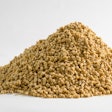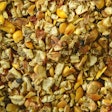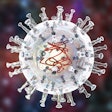With food recalls and alerts running rampant and consumers wanting reassurance that their food is safe, the need to communicate safety and hygiene messages is critical to survival in the food industry.
To guide food workers and managers through the challenges and opportunities in food industry safety communications, Graphic Products, manufacturers of DuraLabel thermal transfer printers and industrial supplies, has released a Food Industry Safety Guide which is available at no charge.
The guide addresses:
- Organizing your workplace with 5S Lean Manufacturing
- Important signs for food processing workers
- Government standardized colors, designs and wording
- Ammonia pipe marker standards
- The Conveyor Equipment Manufacturers Association specifications for conveyor safety labels
The guide also addresses visual communications solutions. Visual communications provided by proper signage and labeling helps reduce many of the risks associated with food industry hazards, including high heat (surfaces and liquids), spray from machinery, animal waste, and working long hours. Visual communication also aids in maintaining sterile conditions -- helpful in preventing disease and potential food recalls. Unhygienic conditions within food manufacturing plants have a catastrophic effect on public health and revenue impact for manufacturers.
Stainless steel is the industry standard for food processing tanks and other equipment. Its durability, resistance to corrosion, non-absorbent finish, tolerance to temperature extremes and that there is no reaction between the metal and food makes it an obvious choice. Despite the hardiness of stainless steel, most labels will slowly corrupt its surface. Halide ions penetrate and break down the protective layer, causing it to leech contaminants. DuraLabel low-halogen tape supplies minimize this breakdown. Intended for use on smooth surfaces, this tape has a service temperature range from -40 to 300 F.
Another supply designed specifically for the food industry is DuraLabel's metal detectable label tape. This supply was designed so that if small label fragments land in the food, they can be detected with a metal detector during the production process. This reduces the likelihood of contaminants reaching a consumer. At many food plants, metal-detectable labels are a requirement.
Other food industry sign and label applications include:
- Equipment start-up and operating procedures
- Tracking the movement of product from production to delivery with barcode labels
- Industrial-strength floor marking tape to organize pallets and safely direct fork lift traffic
Standard signs have a tendency to bleed or simply peel right off in these harsh environments. Graphic Product's Food Industry Safety Guide explains the types of labeling and tagging supplies which are most appropriate for processing and packaging food.













